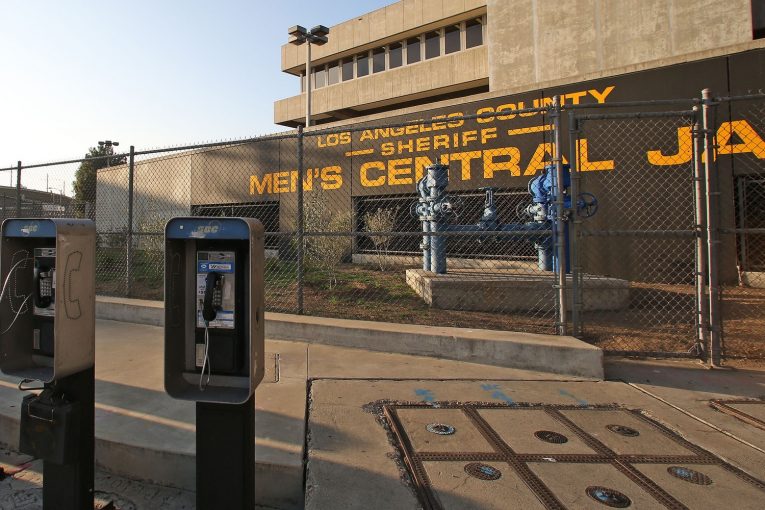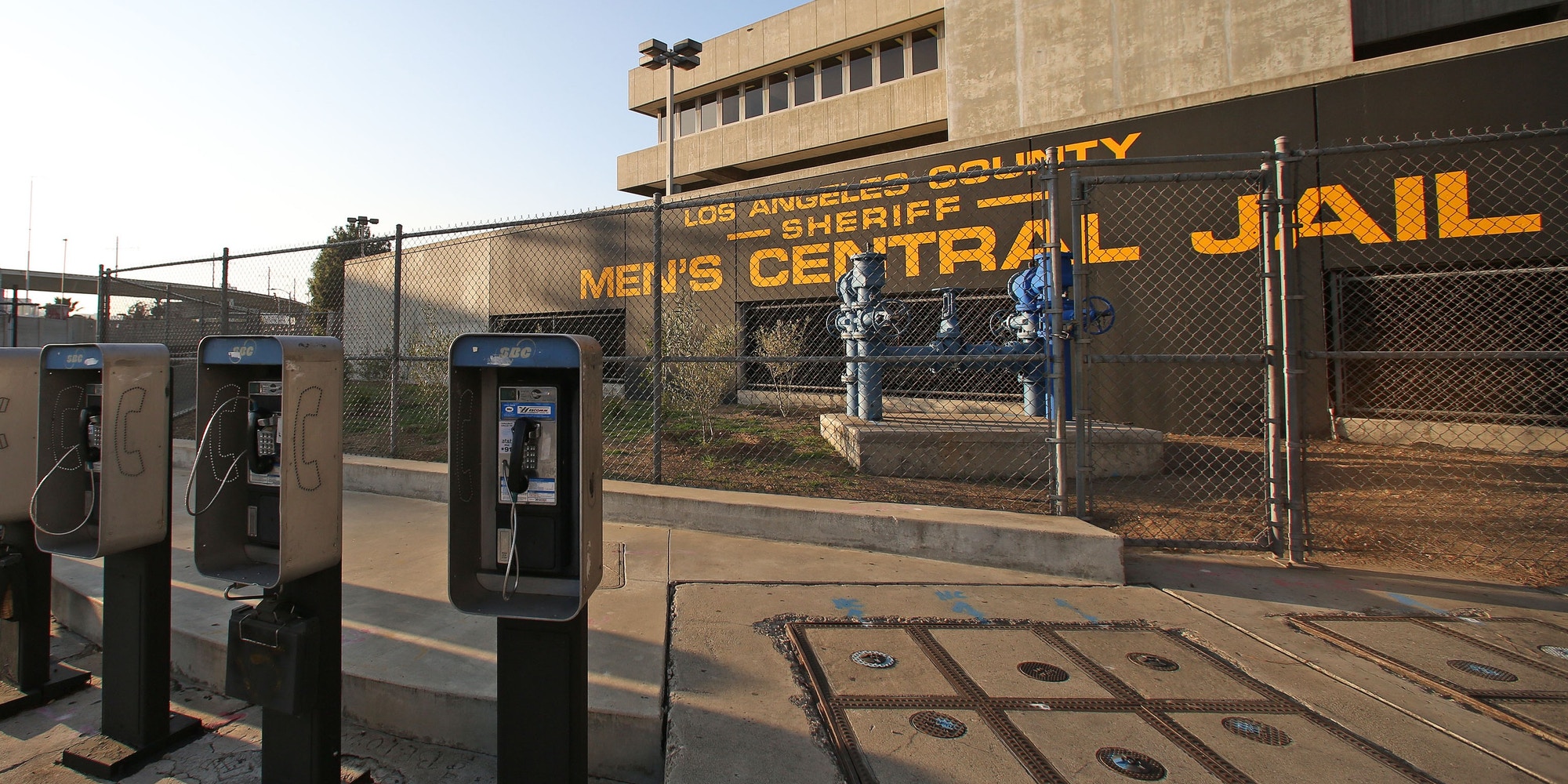

By Sam McCann
The Los Angeles jail system is the largest mental health institution in the United States, and it’s locking up more people with mental illness than ever before. But this fall, a coalition local organizers, service providers, impacted families, and advocates like Vera secured two major victories that will divert hundreds of people with mental health needs away from Los Angeles County’s inhumane and dangerous Men’s Central Jail (MCJ) and into supportive housing. The wins are part of an ongoing effort to transform how Los Angeles approaches mental health.
The Office of Diversion and Reentry (ODR) was created in 2015 to provide diversion and support services for people with mental health needs. It does so primarily by offering permanent supportive housing and clinical support—instead of incarceration—for people accused of crimes. Since 2015, it has diverted at least 8,500 people from county jails into community support systems, providing essential stability. But ODR has been operating at its maximum capacity of 2,200 beds since 2021, meaning it has been forced to turn away people who need exactly the services it offers.
That is, until October—when the County Board of Supervisors voted to fund an additional 750 ODR beds after a sustained campaign from a broad swath of community members and advocates: funding that will provide an infusion of support to better serve the county’s pressing mental health needs. Then, within a month of the board’s vote, a federal judge handed down an order that reaffirmed the need for Los Angeles to fund treatment over jails. After advocates filed a federal lawsuit over extreme overcrowding in MCJ, the court ordered the Board of Supervisors to formulate and implement a plan to reduce the number of people with mental health conditions it incarcerates, with thresholds the county must meet over the next one and three years. The order compels the county to not only reduce the jail population from the current dangerous levels, but also to invest in mental health services provided outside of jails.
Taken together, these two developments can provide a springboard for Los Angeles to reduce the jail population while expanding tools proven to build public safety. They may signal a shift in county priorities that Vera and advocates have worked toward for years.
Why are treatment beds so important?
Los Angeles County’s reliance on incarceration instead of treatment for people with mental health needs represents a colossal failure: 39 percent of the nearly 15,000 people held in Los Angeles County jails on December 15, 2022 have mental health needs, and researchers have found that 61 percent of people taking psychotropic medications or housed in specialized mental health units could be safely diverted into existing alternatives to incarceration.
Community-based care is essential because jails are simply not treatment environments, and quality of care in county jails is counterproductive to meeting the needs of those with mental health conditions. Intake facilities are dangerously crowded; the county fails to provide required services; and mistreatment abounds with horrors like incarcerated people being forced to urinate and defecate on the ground, cells overflowing with garbage, and people in need of treatment being chained to chairs for days on end. For people with mental health care needs, being subject to these injustices can exacerbate conditions and fuel a cycle of incarceration that can be difficult to escape.
But ODR has a track record of breaking that cycle. One study found that 86 percent of ODR program participants had no new felony convictions and 74 percent had stable housing after 12 months. Given that the Board of Supervisors committed to closing MCJ last year, expanding the number of ODR beds is a necessary step.
Where is the money coming from and why does it matter?
Although 250 of the new beds will be paid for by local funding, 500 of them will be largely funded from a pot of state money established by a 2011 United States Supreme Court ruling that ordered California to reduce the deadly overcrowding in its prisons. The state passed AB 109 in response, which moved people convicted of low-level, nonviolent offenses from state prison to local jails and allocated funds to handle this influx to the local jail population—usually through incarceration, supervision, or diversion into community programs. In Los Angeles, the vast majority of that money has gone to the Sheriff’s office and law enforcement, rather than programming that actually addresses the root causes of incarceration. Between 2011 and 2012, for instance, 91 percent of AB 109 money went to law enforcement, with just 9 percent going to other services, like diversion programs that prevent crime rather than simply react to it. But thanks to sustained organizing over the past decade, the most recent LA County budget saw only 67 percent of AB 109 funding go to law enforcement. After this vote, even more of it will instead go to meeting mental health needs outside of jail.
The county’s decision to redirect those funds toward treatment represents a turning point, says Michelle Parris, program director of Vera California.
“For years, we have wasted hundreds of millions of AB 109 dollars in locking up people who instead need treatment. We’ve been shooting ourselves in the foot by spending twice as much money to hold people in jail as it would cost to provide them treatment in the community, with no benefit to public safety,” Parris said. “The board redirecting AB 109 funds to services people really need, which actually keep our neighborhoods safe, is a huge step in the right direction.”
How did these victories happen?
The expanded ODR budget and the federal judge’s ruling are the fruit of years of work by Vera, local community members, and others to reshape the county’s approach to public safety, pushing it to fund programs that reduce crime and build stability, rather than further bloat the population in dangerously overcrowded jails. One key step in that process was the creation of the Alternatives to Incarceration (ATI) report, issued in March 2020 by the LA County working group, working under the county’s Chief Executive Office. The report, entitled “Care First, Jails Last,” committed the county to a vision for Los Angeles that does not rely on jails to address mental health needs or homelessness. The vote to expand ODR funding through AB 109 likely would not have happened without it.
Ivette Alé-Ferlito, executive director of the anti-carceral organization La Defensa, was deeply involved in the drafting of the ATI Report through Justice LA, a coalition of advocates opposed to jail expansion. They said the document came together thanks to an inside/outside strategy: community activists organized for alternatives to incarceration for years, then worked closely through the county’s process to realize those alternatives when the opportunity presented itself. “Justice LA already had an ATI working group [before the county process began], and we had already started to write and envision what the alternative recommendations would be,” Alé-Ferlito said.
After the county issued its report, it then set out to implement some of its recommendations. “The county became really invested in building out alternatives to incarceration [because of the report]. Then the question became: ‘How are we going to fund it?’” Alé-Ferlito said. AB 109 became one of the obvious answers, setting the stage for decisions like funding ODR expansion this fall.
What happens next?
The judge’s order requires that the county continue to expand programs that will reduce the number of people with mental health needs who are held in local jails. Those plans have yet to take shape, but the effectiveness of ODR and the recent vote for its expansion offer promise.
However, realizing that promise depends on implementation, too. If the recent wins do indeed bring a sea change in how the county handles mental health needs, that means there’s plenty of work ahead, according to Troy Vaughn, executive director and chair of the Los Angeles Regional Reentry Partnership, a network of service providers that offer housing, health, and employment solutions for people with legal system contact.
“I think about where the Sea of Cortez meets the Pacific Ocean: it’s a sea change but in the moment it changes, there’s a lot of turbulence,” Vaughn said. “So yes, [these decisions] are a sea change. But we [have] got to make sure that we batten down the hatches in a way that understands the dynamics of the change.”
That means ensuring that service providers who implement the programs are set up to succeed. Vaughn says that guaranteeing salary parity for treatment staff in community-based programs and those who work directly for the county, often in jails, would go a long way toward speeding implementation. He also pointed to easing onerous contracting processes that stall programs working in communities that need them. These moves would better enable service providers to successfully implement programs that can keep people housed, that lower their chances of rearrest, and that judges trust enough to release those in custody into.
“This investment is an important start for Los Angeles to end the suffering and cruelty of mass incarceration and to replace it with something that can actually decrease the jail population and center care,” Parris said. “We must get this right, though, and the devil is in the details. We have to build the capacity of service providers by removing barriers to contracts, through sustained funding, and by growing the ability of communities across the county to make sure no one is left to languish and deteriorate without the care they need.”
Originally published by Vera Institute of Justice.
Sam McCann is a Senior Writer with Vera Institute of Justice.
